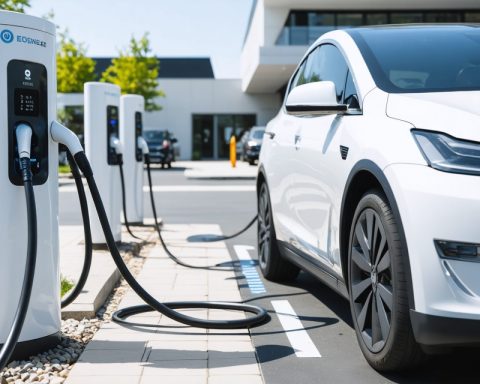The Shift: The landscape of the used electric vehicle (EV) market has been drastically altered by the introduction of cutting-edge EV models from various manufacturers, sparking a cascade of repercussions across the industry.
New Realities: Recent market observations reveal a substantial decrease in the resale value of pre-owned EVs, attributing much of the decline to the launch of state-of-the-art EVs by prominent automakers. This shift has led to an oversupply of unsold EVs, diverging from the former scarcity that had propelled used EV prices to match those of brand-new units.
Market Trends: In light of these developments, the average price of a three-year-old EV has nosedived to about $28,400, marking a notable 25% decrease from previous evaluations. While this price slump might entice frugal buyers, it poses challenges for existing EV owners grappling with loan values surpassing their vehicle’s depreciated worth.
Market Players: Notably, the decision by major rental companies to flood the used market with off-lease EVs has exerted additional downward pressure on prices. The escalating prominence of leasing as the dominant acquisition method for new EVs has further fueled the decline in used EV values, with leasing transactions now constituting approximately 80% of all electric vehicle sales at dealerships.
The Outlook: This shift in the used EV market underscores a broader transformation within the EV sector, catalyzed by advancements in new EV models. While Tesla’s strategic pricing adjustments have played a pivotal role in reshaping market dynamics, industry analysts project continued growth in the overall EV market despite fluctuations in individual company sales figures. As industry stalwarts like Rivian also venture into the pre-owned vehicle market, offering competitive pricing alternatives through online platforms, the ripple effects of new EV introductions continue to reverberate throughout the industry.
The Impact Unveiled: As the influx of new electric vehicle (EV) models continues to reshape the automotive landscape, deeper layers of impact on the used market dynamics are unveiled.
Unexplored Realities: One significant factor not yet fully explored is the effect of new EV models on the availability of spare parts for older electric vehicles. With manufacturers shifting their focus to producing parts for newer models, owners of older EVs might face challenges in finding affordable and accessible replacement components.
Important Questions: How will the increasing number of fast-charging stations for new EVs affect the resale value of older models with limited charging compatibility? Will advancements in battery technology in new EVs render older models obsolete, further depreciating their value in the used market?
Key Challenges: A primary challenge arising from the impact of new EV models on the used market is the potential disparity in infrastructure support. While new EVs benefit from enhanced charging networks and software updates, older models may not receive the same level of technological support, resulting in a widening gap between generations of electric vehicles.
Advantages: One advantage of the expanding range of new EV models is the increased affordability and accessibility of electric vehicles to a broader consumer base. As competition drives down prices for new EVs, prospective buyers can explore a wider selection of eco-friendly transportation options.
Disadvantages: Conversely, the rapid turnover of EV models in the market may lead to a devaluation of older models at a quicker pace than anticipated, complicating ownership decisions for existing EV owners looking to trade in or sell their vehicles.
Controversies: A prevalent controversy surrounding the impact of new EV models on the used market is the ethical dilemma of incentivizing consumers to upgrade to the latest models, potentially accelerating the cycle of consumerism and electronic waste generation.
The Key Issues: As the industry navigates these evolving market dynamics, balancing innovation with sustainability remains a critical focal point. Understanding the intricate relationship between new and used EVs will be imperative in shaping a more sustainable and equitable future for electric mobility.
For further insights on the evolving landscape of electric vehicles, visit US Department of Energy.








